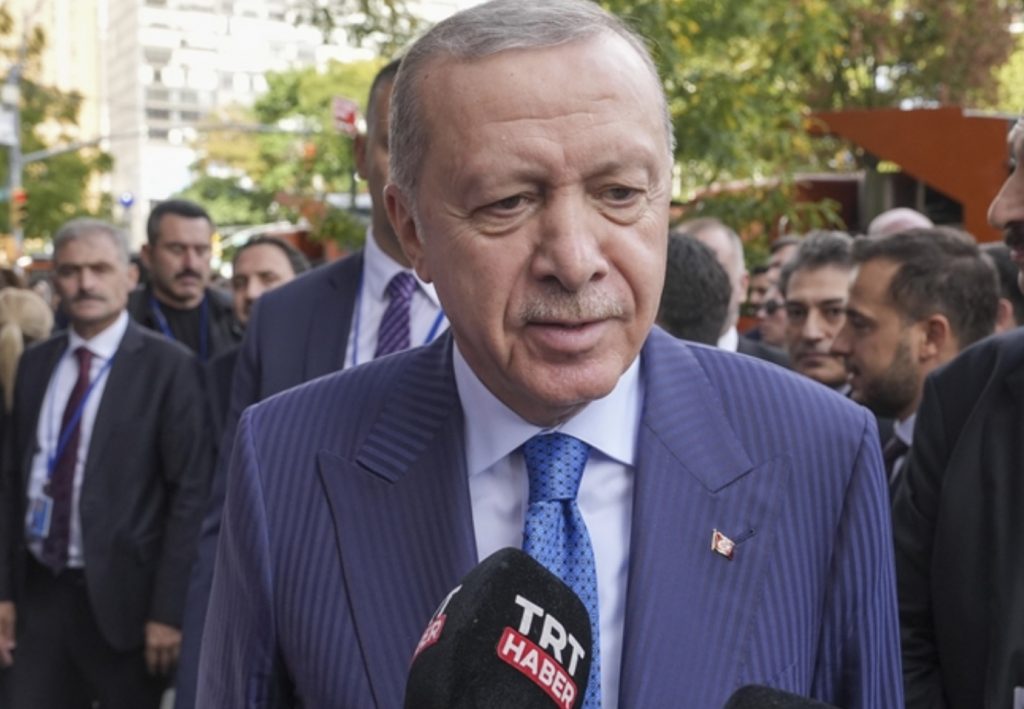President Recep Tayyip Erdoğan arrived in the United States on Sunday, Sept. 21
President Recep Tayyip Erdoğan arrived in the United States on Sunday, Sept. 21, to headline the 80th United Nations General Assembly (UNGA) and to press a broad agenda that stretches from Gaza diplomacy to trade, energy and defense ties with Washington. Turkish outlets and officials said the trip would include the UN speech, meetings with world leaders in New York, diaspora outreach at the Türkevi Center, and follow-on talks with the White House—marking Erdoğan’s most ambitious U.S. swing since 2019.
Erdoğan used his UN platform on Sept. 23 to frame Ankara’s priorities—de-escalation in Gaza, support for a viable Palestinian political track, and a call for more equitable global governance—before pivoting to a dense schedule of bilaterals with European, Middle Eastern and African counterparts. Turkish state communications characterized the week as “intense diplomatic traffic,” underscoring an effort to translate podium rhetoric into concrete alignments on aid access, reconstruction and regional security. United Nations Media+1

Running parallel to the UN agenda was a reset drive with Washington. Erdoğan and President Donald Trump met around UN week and later at the White House, where both sides reopened long-stalled defense and industrial files. Public readouts and subsequent reporting indicated discussions on removing CAATSA sanctions linked to the S-400 purchase, a pathway back toward fifth-generation fighter cooperation, and a resolution track for the long-running Halkbank case—issues Ankara argues have depressed investor sentiment and complicated defense planning. Erdoğan later told Turkish media he was optimistic after his talks with Trump, comments that moved Halkbank shares higher in Istanbul.
Gaza diplomacy was the other through-line. U.S. officials have leaned on Türkiye’s contacts with Hamas as Washington and regional partners built the cease-fire and hostage-prisoner exchange that dominated UNGA corridors this year. Erdoğan said Trump had asked Ankara to persuade Hamas to back a U.S.-supported plan and confirmed that Turkey’s intelligence chief joined the talks in Egypt, placing Türkiye alongside Qatar and Egypt in the shuttle channel. The Turkish government has publicly condemned Israel’s campaign in Gaza and suspended trade, while still positioning itself as a mediator able to move armed actors toward verifiable steps.
Economics gave the visit a second layer of importance. At the Türkiye Investment Conference in New York, Erdoğan told U.S. executives that bilateral trade had exceeded $35 billion and reiterated a long-standing $100 billion target first set with Trump in 2019, pointing to energy, defense supply chains and critical materials as near-term growth lanes. Pro-government and independent coverage alike cast the conference, TASC diaspora events and one-on-one CEO meetings as a bid to restore deal flow after years of macro volatility and geopolitical frictions.
For Ankara, the results of the trip were less about a single headline and more about re-wiring channels. On the political side, Erdoğan left New York with clearer roles in the cease-fire architecture and a renewed claim to mediator status. On the U.S. track, he returned to Ankara arguing that sanctions relief, fighter-aircraft cooperation, and the Halkbank file were movable with continued leader-level engagement. On the economic front, his team spotlighted investor meetings and sector pledges as groundwork for fresh capital once legal and defense frictions ease. Turkish officials wrapped the visit as “productive,” emphasizing momentum across UN, trade and Trump tracks; U.S. and third-country reporting pointed to the same files but cautioned that most of the gains now depend on follow-through. Anadolu Ajansı+2Daily Sabah+2
Why it matters is straightforward. A working cease-fire in Gaza lowers the risk of a wider regional spillover and gives Ankara and Washington an arena for practical cooperation after a combative period. Progress on CAATSA and airpower would, if realized, ease the most corrosive friction in the defense relationship and unlock stalled industrial projects. And a steadier trade channel—anchored in energy, advanced manufacturing and minerals—would help Türkiye’s export-led growth strategy while deepening U.S. supply-chain diversification. The itinerary around UNGA 80 was designed to push each of those levers at once; the strategic test now is whether agreements in principle move from leader-level statements to signed, bankable deals.
